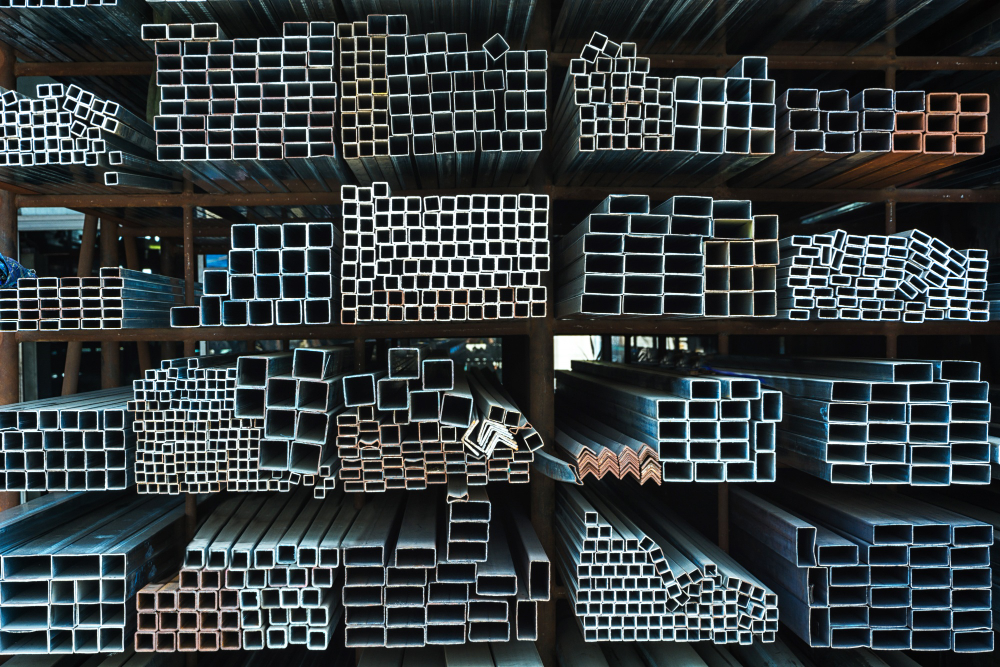The classification of chemical elements is a fundamental concept in chemistry. Zinc, with the symbol Zn and atomic number 30, is an intriguing element that can be classified in various ways. In this article, we will delve into the nature of zinc to determine whether it should be labeled as a metal, nonmetal, or metalloid. We will analyze its physical properties, chemical characteristics, electronic structure, and its position on the periodic table to draw a conclusive assessment.

1. Physical Properties of Zinc
The physical properties of an element provide crucial insights into its classification. Zinc, at room temperature, is a solid with a shiny-greyish appearance. It is malleable and ductile, properties that are commonly associated with metals. These characteristics align with the typical attributes of metallic elements. Metals are generally solid at room temperature, lustrous, malleable, and ductile. Therefore, based on its physical properties, zinc appears to be a metal.
2. Chemical Properties of Zinc
To further elucidate zinc’s classification, we must examine its chemical properties. Metals typically form cations (positively charged ions) when they undergo chemical reactions, and they exhibit metallic luster. Zinc indeed forms Zn²⁺ ions in chemical reactions, which is a clear indication of its metallic nature. Furthermore, its lustrous appearance, especially when freshly polished, conforms to the characteristics of metals.
3. Electronic Structure of Zinc
Zinc’s electronic structure also plays a crucial role in its classification. The electron configuration of zinc is [Ar] 3d¹⁰ 4s², indicating that it has two electrons in its outermost shell. This electronic configuration is consistent with the typical electronic structure of metals, which usually have one to three electrons in their outermost shells. This low number of valence electrons promotes metallic bonding, as seen in other metals.
4. Zinc’s Position on the Periodic Table
The periodic table is a valuable tool for classifying elements. Zinc is found in Group 12 of the periodic table, specifically in Period 4. Elements in the same group often share similar chemical properties. In the case of zinc, it is situated in a group predominantly composed of metals. This group includes elements such as cadmium and mercury, which are undoubtedly metals. This placement further supports the classification of zinc as a metal.
5. Zinc’s Role in Alloys
Another significant aspect to consider when classifying an element is its use in alloys. Zinc is commonly used in various alloys, such as brass (zinc and copper) and galvanized steel (zinc-coated steel). Alloys are typically composed of one or more metals, and zinc’s widespread use in such applications underscores its metallic nature.
6. Metalloids: The Gray Area
In the realm of chemical classification, there exists a category known as metalloids. Metalloids are elements that exhibit properties of both metals and nonmetals. Common metalloids include silicon, germanium, and arsenic. When assessing zinc’s classification, some might argue that it exhibits properties of a metalloid due to certain characteristics that deviate from typical metals.
7. The Argument for Zinc as a Metalloid
One of the characteristics that could lead to the argument for zinc being a metalloid is its brittleness. While metals are generally malleable and ductile, zinc is somewhat brittle at room temperature. This brittleness sets zinc apart from the typical flexibility seen in metals.
Another argument could be made based on zinc’s semiconducting properties. Zinc is used in certain electronic applications as a semiconductor material, akin to silicon and germanium, two well-known metalloids. Semiconductors can conduct electricity under certain conditions but are not as conductive as metals. This property may be viewed as a bridge between the conductive nature of metals and the insulating nature of nonmetals, which is characteristic of some metalloids.
8. The Counterargument for Zinc as a Metalloid
Although some characteristics of zinc may seem reminiscent of metalloids, it is essential to emphasize that the majority of its properties align with those of metals. Zinc forms cations in chemical reactions, has a metallic luster, and exhibits metallic bonding. The brittleness observed in zinc can be attributed to impurities or conditions, rather than an intrinsic characteristic. As for its use as a semiconductor, it is employed specifically in certain applications, but this doesn’t define its overall nature as a metalloid.
9. Zinc in Everyday Life
Zinc is a versatile element that finds a multitude of applications in our daily lives. Its unique properties, such as corrosion resistance and malleability, make it a valuable commodity across various industries. From health and nutrition to construction and beyond, zinc plays a crucial role in many everyday products and processes. In this section, we’ll explore some of the most common uses of zinc in our daily lives.
1. Health and Nutrition
Zinc is an essential nutrient for the human body. It plays a vital role in various physiological processes, including immune function, wound healing, and DNA synthesis. Many people take zinc supplements to ensure they meet their daily recommended intake. In addition to supplements, zinc is naturally present in various foods, such as meat, dairy products, nuts, and legumes, making it an important element for maintaining good health.
2. Sunscreen and Cosmetics
Zinc oxide, a compound derived from zinc, is a key ingredient in sunscreens and cosmetics. It provides effective protection against harmful ultraviolet (UV) rays from the sun. Zinc oxide acts as a physical barrier, reflecting and scattering UV rays away from the skin. This makes it a popular choice for sunscreens, providing sun protection while being gentle on the skin.
3. Batteries
Zinc is widely used in batteries, particularly in alkaline batteries and zinc-carbon batteries. These batteries power a multitude of everyday devices, from remote controls and flashlights to smoke detectors and toys. Zinc’s electrochemical properties make it a reliable and cost-effective choice for battery production.
4. Galvanized Steel
One of the most common uses of zinc is in the galvanization of steel. Galvanized steel is created by coating iron or steel with a layer of zinc. This process protects the underlying metal from corrosion, making it suitable for a wide range of applications, including construction, automotive manufacturing, and household appliances. Galvanized steel is used in everything from building materials like roofing and fencing to automobile parts and kitchen appliances.
5. Roofing and Gutters
Zinc is used in roofing materials, especially in the form of zinc-coated steel or zinc roofing tiles. Zinc’s resistance to corrosion and its longevity make it an excellent choice for roofing, particularly in areas with harsh weather conditions. Zinc gutters are also common, efficiently channeling rainwater away from buildings while withstanding exposure to the elements.
6. Alloys
Zinc is a key component in numerous metal alloys, enhancing their properties for various applications. For instance, it is commonly used in the production of brass, an alloy of copper and zinc, which is used for musical instruments, plumbing fixtures, and decorative items. Zinc alloys are also employed in die-casting processes to create intricate and durable components for automobiles, machinery, and consumer goods.
7. Agriculture
In agriculture, zinc is used as a nutrient supplement for crops and livestock. Zinc-deficient soil can lead to stunted plant growth and reduced crop yields. To combat this, farmers apply zinc-based fertilizers to improve soil fertility and promote healthy plant growth. Zinc supplements are also given to livestock to maintain their health and productivity.
8. Pharmaceuticals
Zinc plays a role in various pharmaceutical and medicinal applications. It is an active ingredient in certain cold and flu remedies, as it can help reduce the duration and severity of these illnesses. Additionally, zinc-based creams and ointments are used to treat skin conditions like diaper rash and minor burns.
9. Automotive Industry
The automotive industry relies on zinc for numerous components and processes. It is used as an anti-corrosion coating for various parts, such as chassis and body panels, ensuring the durability and longevity of vehicles. Additionally, zinc is essential in the production of zinc die-casting components used in engines, transmissions, and other critical automotive parts.
10. Anodes
Zinc anodes are employed to protect submerged structures from corrosion in marine environments. They are commonly used on ships, oil rigs, and pipelines to safeguard against the corrosive effects of seawater. Zinc anodes serve as sacrificial electrodes, corroding in place of the vital structural components they protect.
Conclusion
In conclusion, the classification of zinc as a metal, nonmetal, or metalloid is a matter of careful consideration. Based on its physical properties, chemical behavior, electronic structure, and position on the periodic table, zinc aligns primarily with metals. It shares the characteristics of metals, such as forming cations and exhibiting metallic luster. Its use in alloys and its placement in Group 12 of the periodic table further substantiate its classification as a metal.
While there may be arguments to label zinc as a metalloid due to its brittleness and semiconducting properties, these characteristics do not define its overall nature. Brittleness can be influenced by various factors, and zinc’s use as a semiconductor is a specialized application rather than a fundamental property.
In conclusion, zinc is best classified as a metal. Its metallic characteristics far outweigh any occasional deviations, and it clearly fits the criteria that define a metal on the periodic table. Thus, zinc, with its atomic number 30, symbol Zn, and metallic attributes, can be confidently placed in the category of metals in the realm of chemistry.





